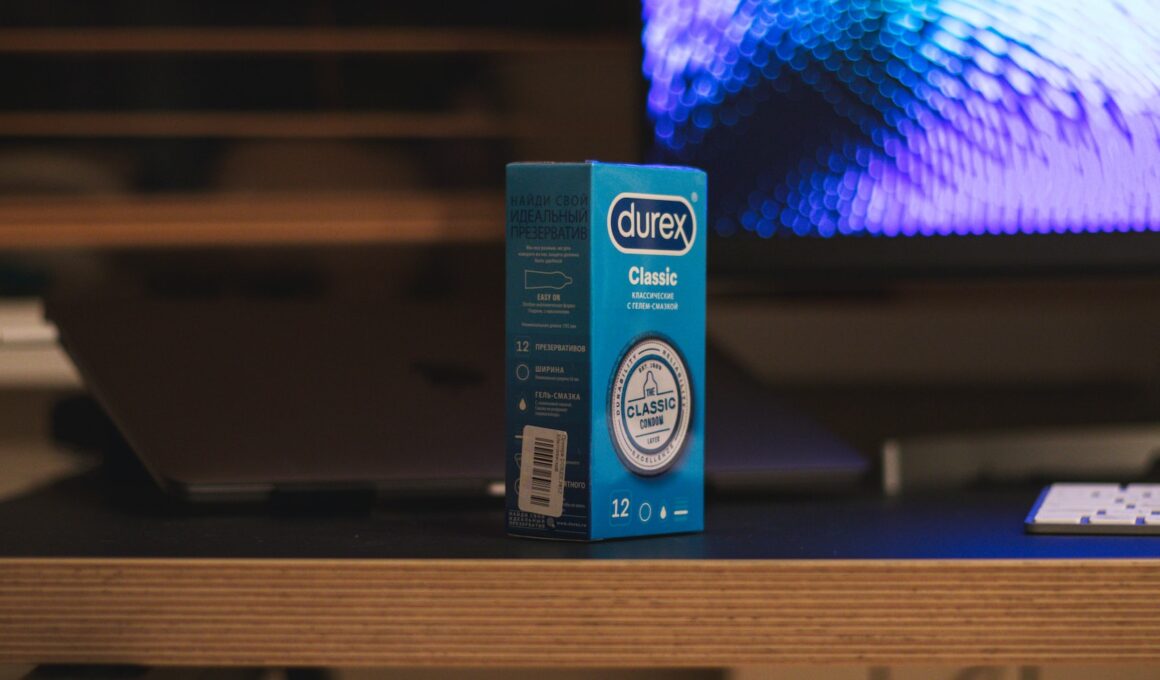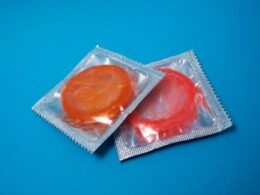Condoms can reduce, but not eliminate, the risk of sexual transmission of HIV and other STIs. Only latex and synthetic (nitrile, polyurethane or polyisoprene) male and female condoms are effective at preventing HIV transmission.
It is important to use condoms consistently and correctly. This includes ensuring that the condom fits, storing them properly and using lubrication during sex to avoid slippage.
How do condoms protect against hiv?
Condoms protect against HIV by preventing bodily fluids that contain HIV from entering the penis, vagina, or rectum and causing infection. The materials used to make most condoms (latex, nitrile, polyurethane, and synthetic rubber) are impermeable to HIV, so they prevent these fluids from coming in contact with the body.
Most studies show that the effectiveness of condoms in blocking STI transmission is over 95% when they are used correctly. However, condoms can break, slip off, or leak. Figures for the frequency of these errors vary greatly, from 0.8 to 41% in Sanders’ study and between 0 and 4% per sexual act in most studies. Using the right type of lubrication can help to reduce these risks. Water-based and silicone-based lubricants are safe to use with all types of condoms.
There are many different types of Durex condoms, each designed for a specific purpose. Some are flavored to increase pleasure, others are designed to delay climax, and some have a special lube that helps extend intimacy. All Durex condoms are FDA approved for pregnancy and disease prevention and electronically tested to ensure quality and reliability.
Some people choose to use natural membrane condoms, such as lambskin, because they don’t contain latex. However, these condoms are more porous than latex condoms, so they are less effective at blocking HIV and other STIs. If you have a sensitivity or allergy to latex, speak with your doctor about other options.
What type of condoms protect against hiv?
HIV is spread through contact with potentially infectious bodily fluids, including semen and vaginal fluids. Condoms block exposure to these fluids and reduce the risk of transmission. In addition, they protect the person from STDs such as gonorrhea, chlamydia, and trichomoniasis that can be spread through vaginal or anal sex. Condoms that are made from latex, polyurethane, or polyisoprene are the most effective in preventing both HIV and other STIs. Lambskin condoms, on the other hand, have pores that can allow HIV to pass through them. Therefore, lambskin condoms should only be used by couples who have both tested negative for HIV and other STIs and have agreed to share a fixed amount of their sperm during sex.
When used consistently and correctly, condoms can be up to 98 percent effective at preventing pregnancy and other STIs. However, condoms can break or leak if they aren’t stored properly or if they are exposed to heat or friction during use. If this happens, the user should stop having sex and put on a new condom immediately.
To increase condom effectiveness, it’s important to choose a condom that fits well and to store it in a cool, dry place away from heat or friction. It’s also important to use lubricant during sex, especially if the user has a latex allergy. It’s also recommended to avoid using oil-based lubricants with latex condoms, as they can break down the material and cause it to leak. Instead, people with a latex allergy should try using a synthetic condom or a non-latex lubricant such as K-Y Jelly, Slippery Stuff, ForPlay, Astroglide, or ID Lube.
Can condoms protect against hiv?
Condoms are highly effective at preventing HIV and most other sexually transmitted infections (STIs). Lab studies and epidemiological research suggest that, when used consistently and correctly, they reduce the risk of transmission by up to 85%. In addition to protecting against HIV, condoms can help prevent pregnancy and STDs like gonorrhea, chlamydia, and syphilis.
However, condoms don’t work as well against certain STIs that are spread by skin-to-skin contact, such as herpes and genital warts. For this reason, it’s important to talk to your doctor about getting tested for HIV and STIs and use condoms every time you engage in intimate activities.
Another way to protect yourself against HIV is to take pre-exposure prophylaxis, or PrEP. PrEP is an oral medication that’s taken daily and can lower your risk of contracting HIV from sex by up to 99 percent. If you’re interested in using PrEP, be sure to discuss it with your doctor.
When using condoms, make sure they’re clean and don’t tear or break. Also, don’t forget to check the expiration date and store them in a cool, dry place. If you have a latex allergy, consider purchasing non-latex condoms that are made from synthetic materials like polyurethane or polyisoprene. You can also purchase spermicide-coated condoms, which are coated with a chemical that works to kill sperm.
Can condoms protect against stds?
Condoms can protect against STDs like gonorrhea, chlamydia, and trichomoniasis by blocking the transmission of these pathogens. Studies have shown that latex condoms provide an essentially impermeable barrier for particles the size of STD-causing bacteria, viruses, and fungi, significantly lowering the risk of contracting or transmitting these diseases.
When used correctly, a condom can help protect against the herpes virus (HSV), herpes B virus, and human immunodeficiency virus (HIV). Condoms can also greatly reduce the risk of genital ulcer diseases such as herpes or HPV infection in both men and women.
For sexual activity that takes place in the mouth, such as oral sex or vaginal sex, it is important to use a condom that fits properly and is free of dirt and debris. Lubrication is also recommended. Oil-based lubricants should not be used with latex condoms, as they can break down the material and decrease condom efficacy. Instead, a nitrile condom with an internal lubricant is recommended.
A condom can also help prevent a genital infection called molluscum. Molluscum is a common STD that causes small, round bumps on the skin in both men and women. While the condition is not dangerous, it can be highly uncomfortable and should be treated. Using a condom during sexual activity can reduce the risk of this infection by keeping semen and pre-cum from reaching the vulva and anus.









